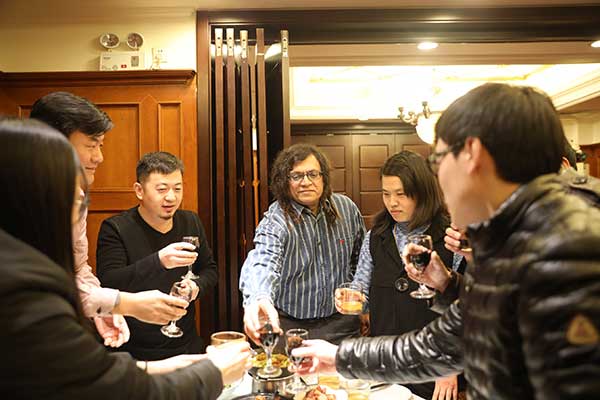 |
|
The town is home to 200 foreign artists like Ramasami as well as thousands of Chinese artists.[Photo/Xinhua] |
In the mid-1990s, artists started to come to Songzhuang, which is now home to more than 200 foreign and thousands of Chinese artists.
They hold exhibitions and expos, and build websites to sell their art.
Besides the Chinese market, Ramasami also keeps an eye on the US and Indian markets.
"I hold exhibitions in these countries, and my paintings sell well," he says.
"'Made in Songzhuang' is now valued. Songzhuang is a conduit for Chinese culture to interact with the world."
In the past five years, artists in Songzhuang have sold an average of 1,000 paintings. They are in the collections of museums of more than 30 countries, according to a Tongzhou cultural official.
"A decade ago, there were no stores, no bars, no cafes - only farmers and us," Ramasami says.
Restaurants, bars and residential compounds have appeared. However, this gentrification is not without its downside, and many of the community's artists have concerns.
Ramasami earns about 100,000 yuan ($14,500) a year selling his paintings, which barely covers his family's living expenses. Moreover, some people worry the artistic environment will be diluted if more outside businesses set up shop.
Artists like Ramasami want Songzhuang to be known as an art town.
As Beijing is on its way to becoming a major cultural center, Tongzhou district is also upgrading its art town. It is staging more activities for artists and is gaining in popularity.